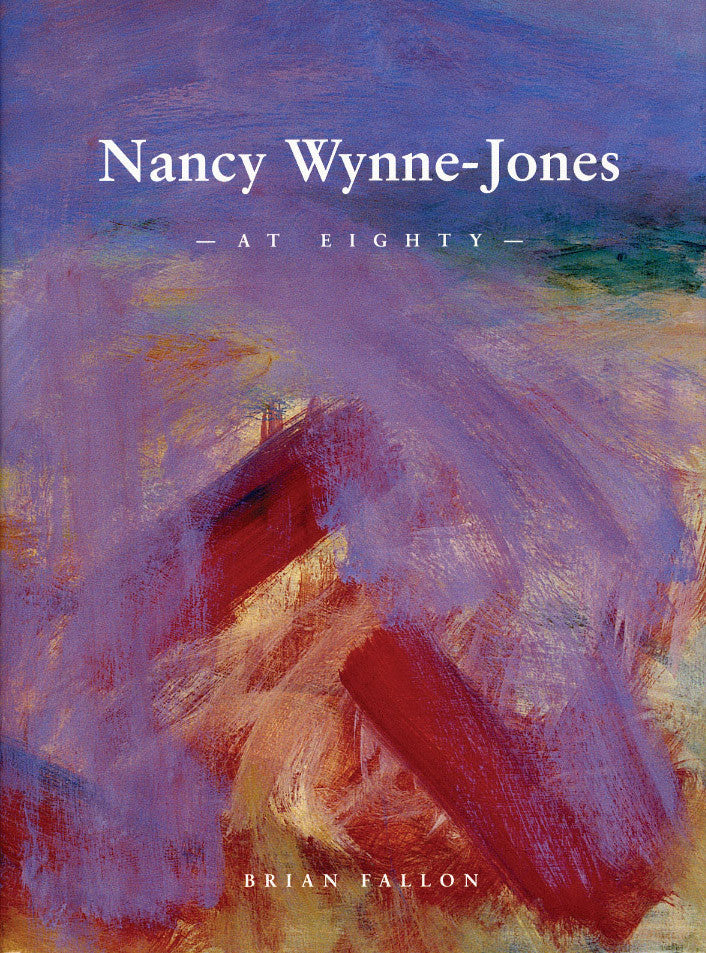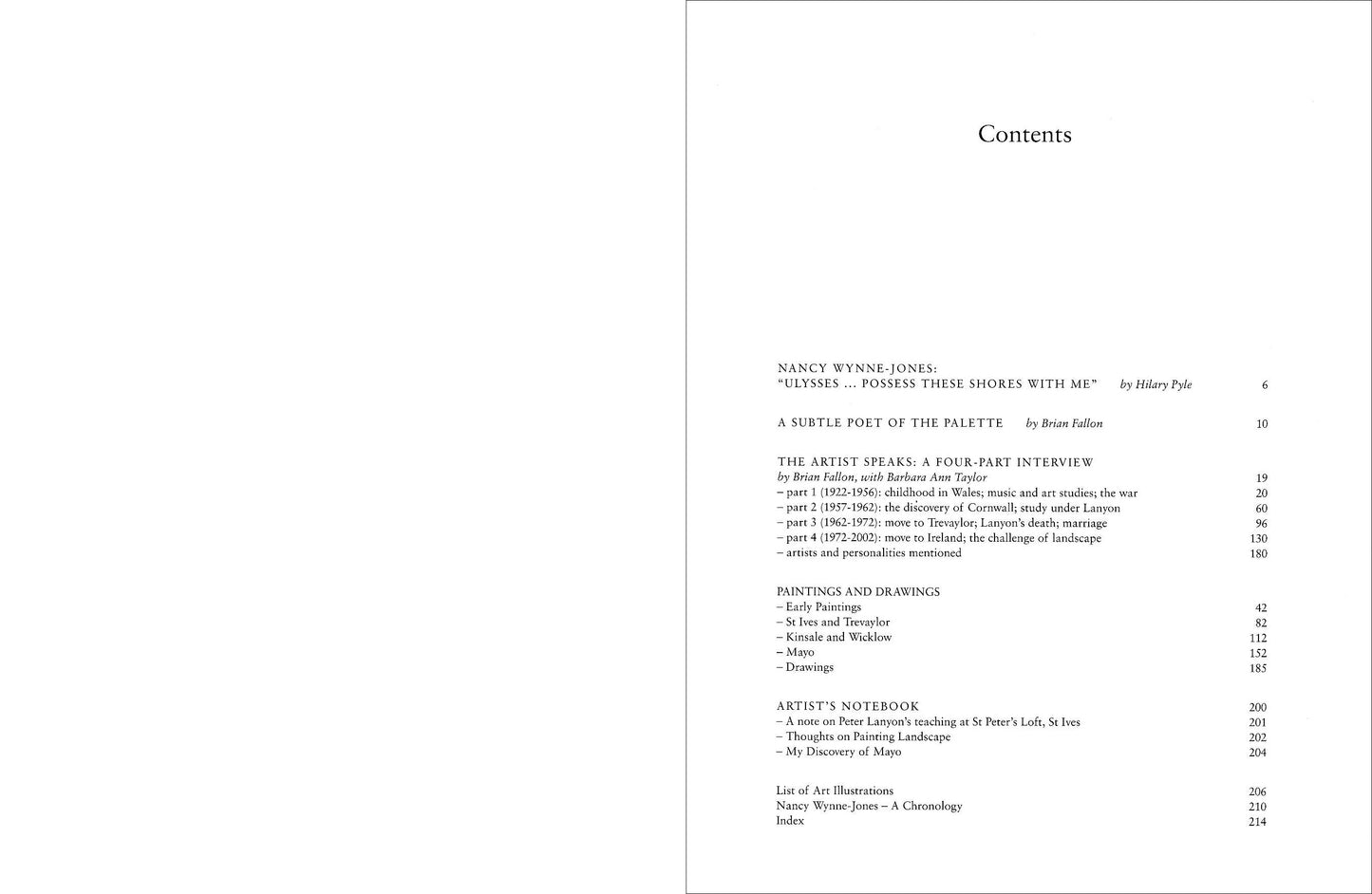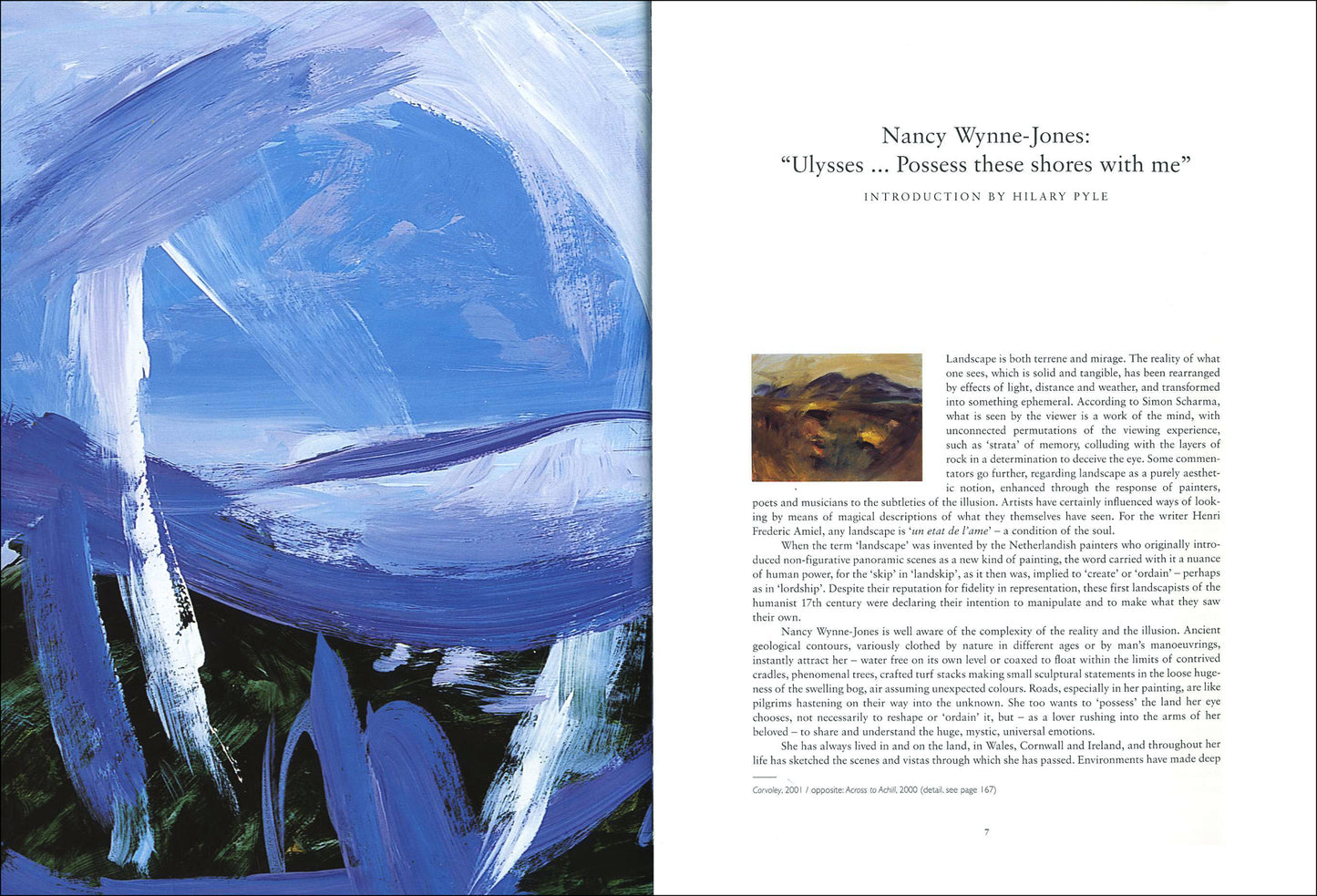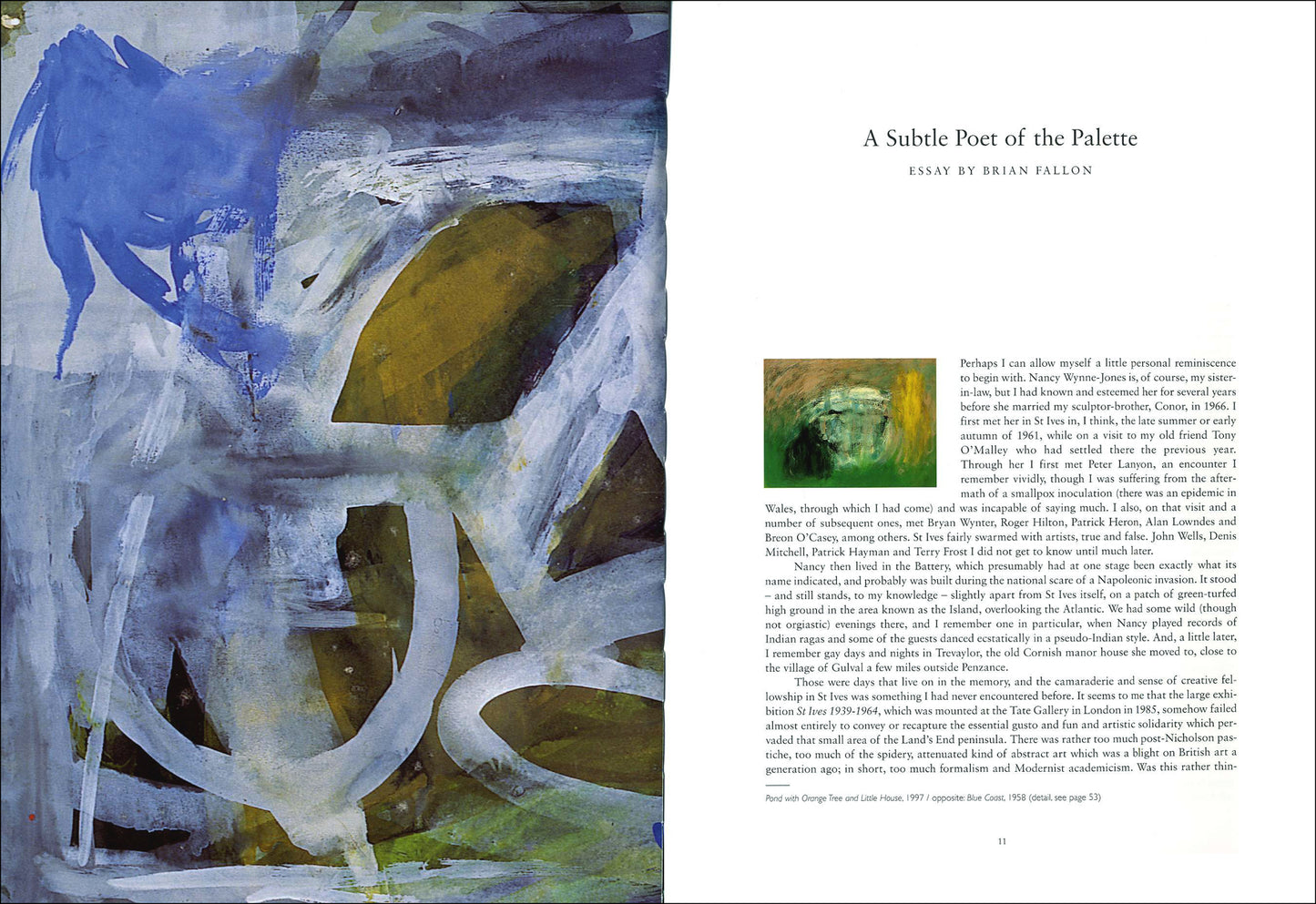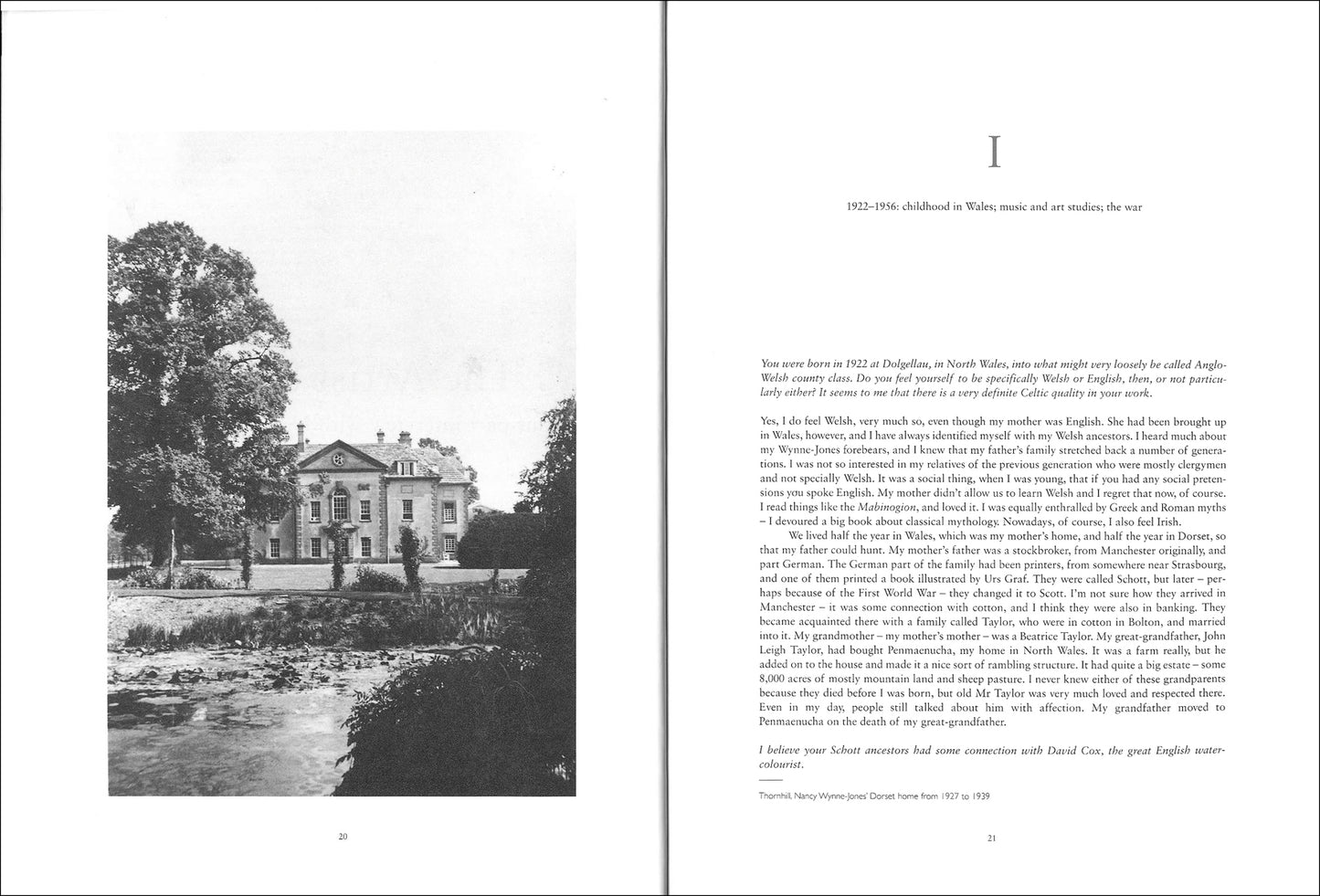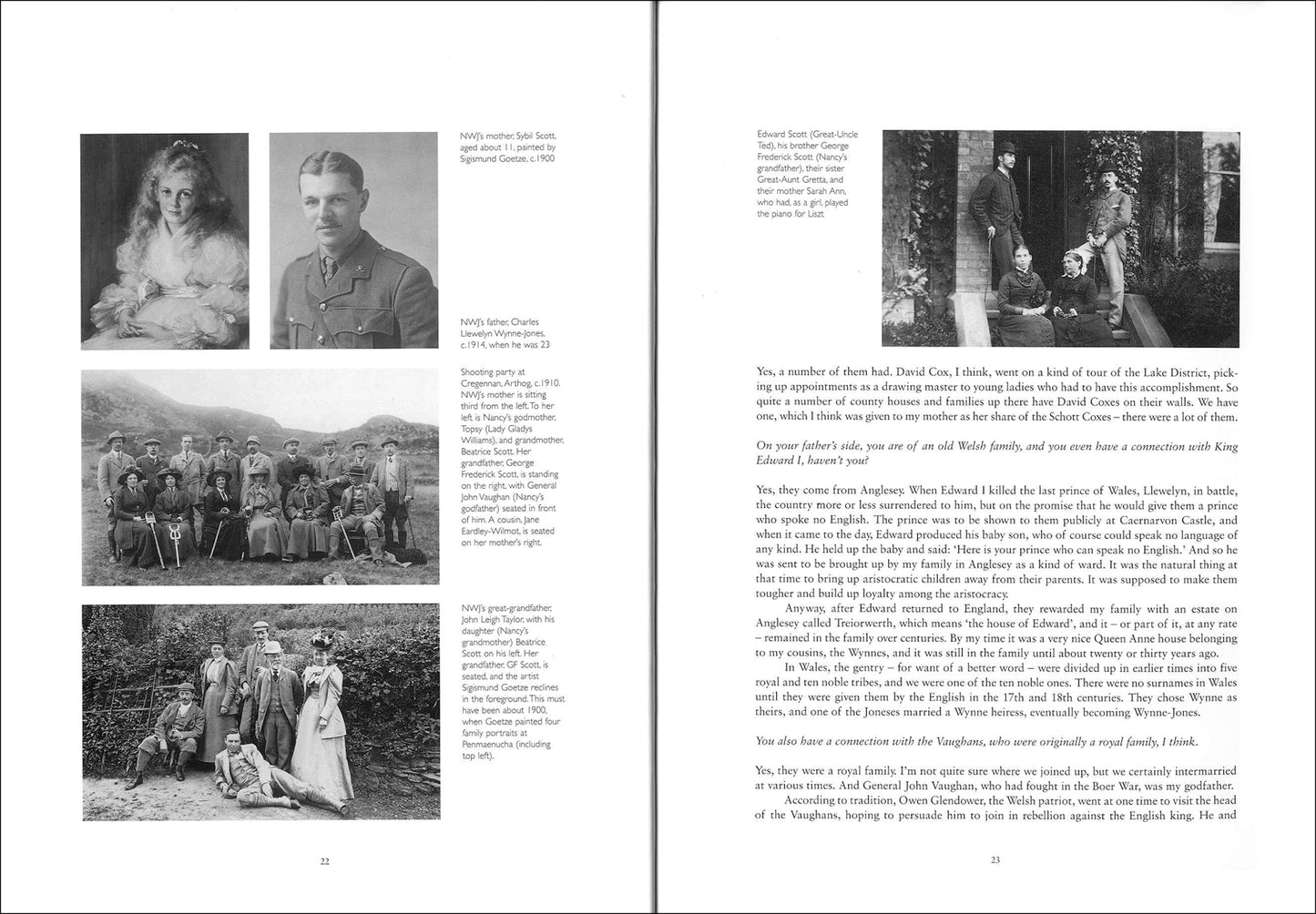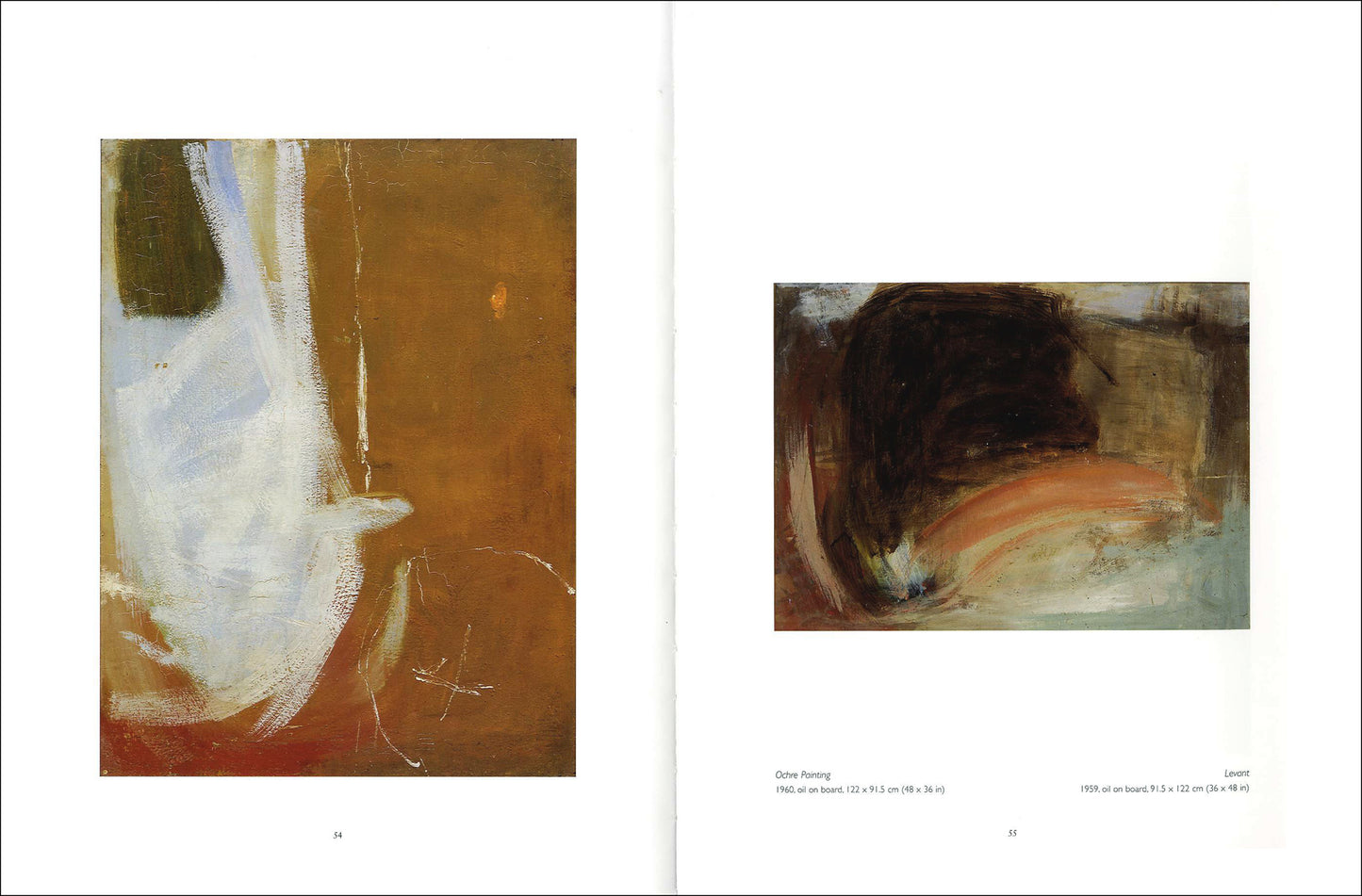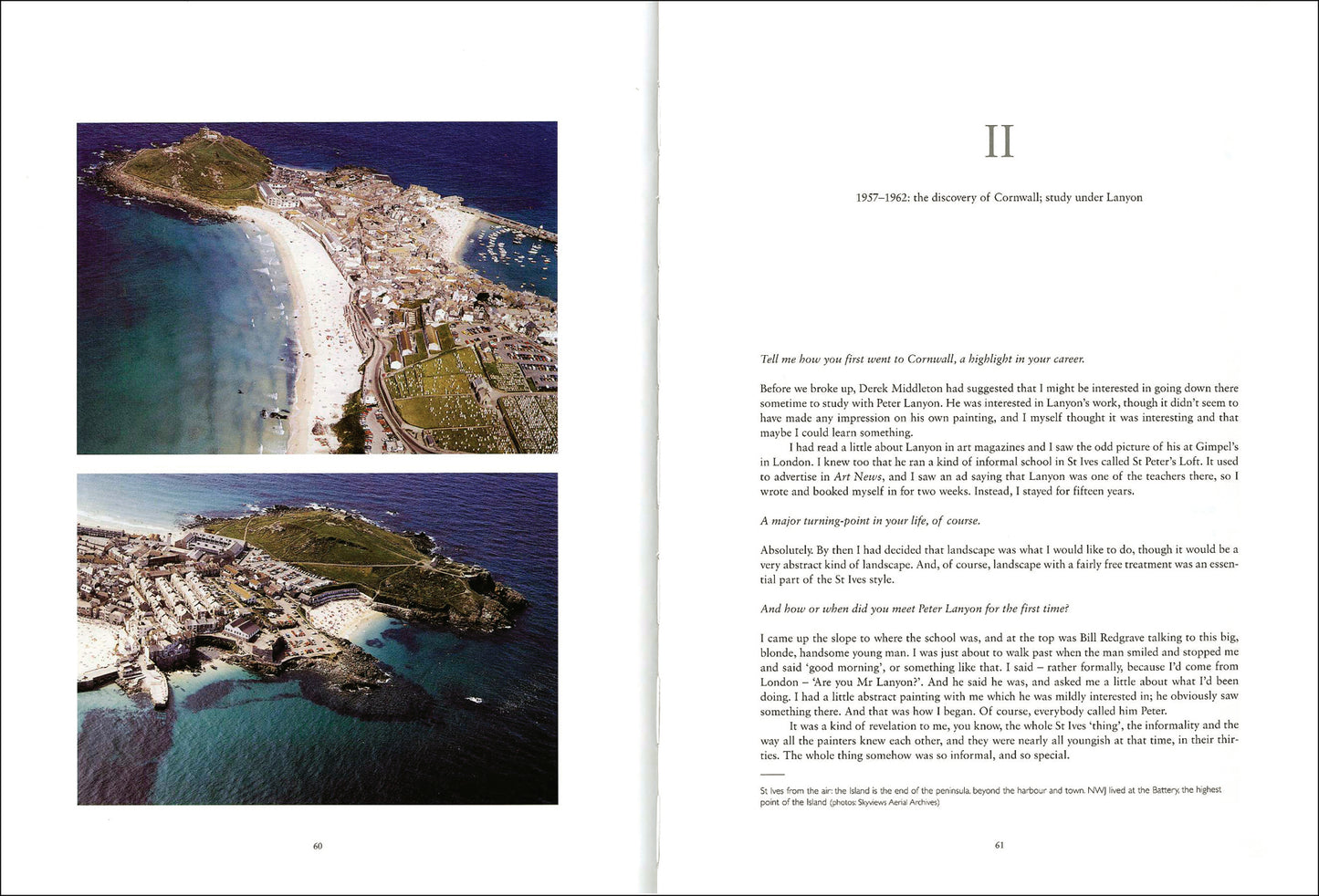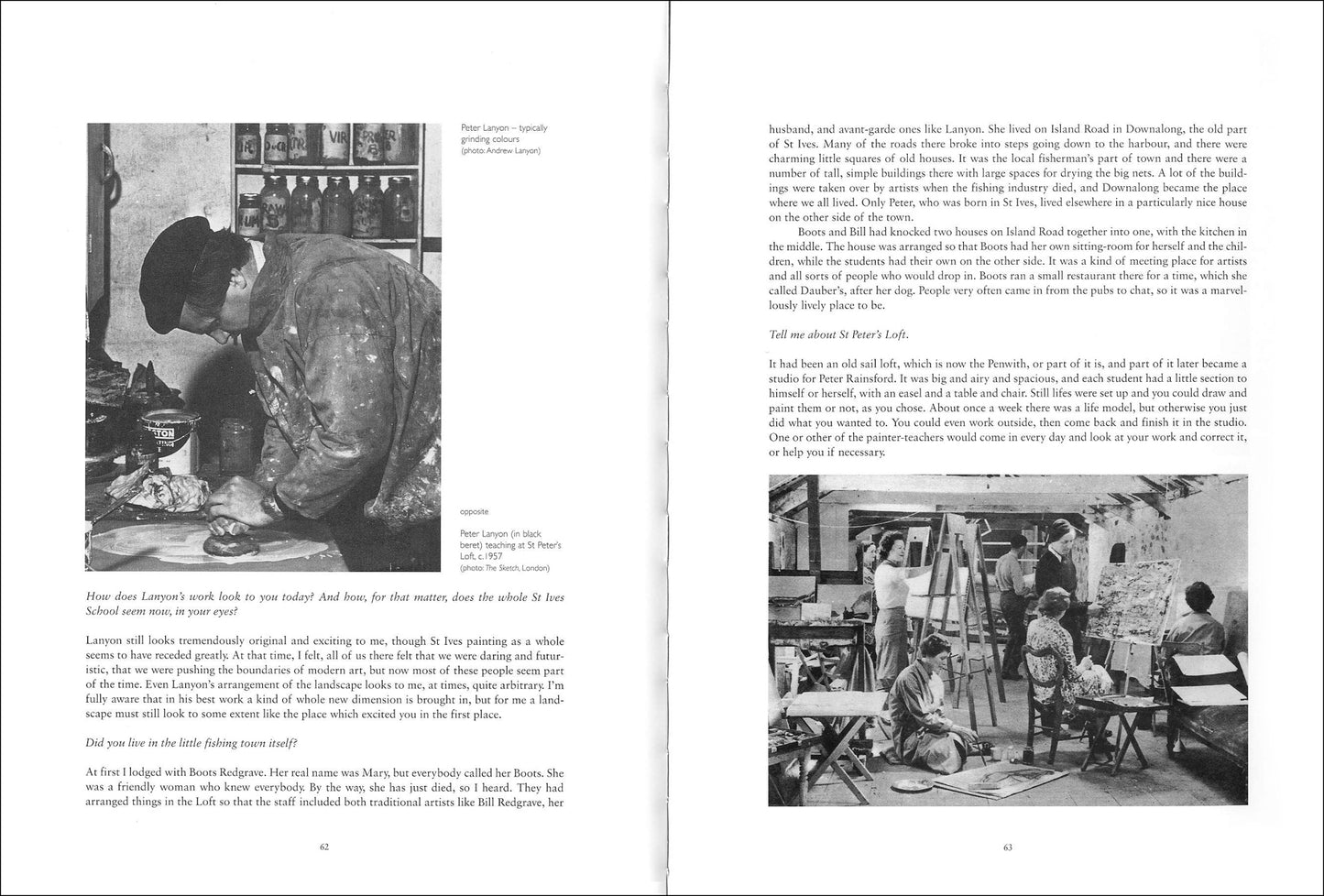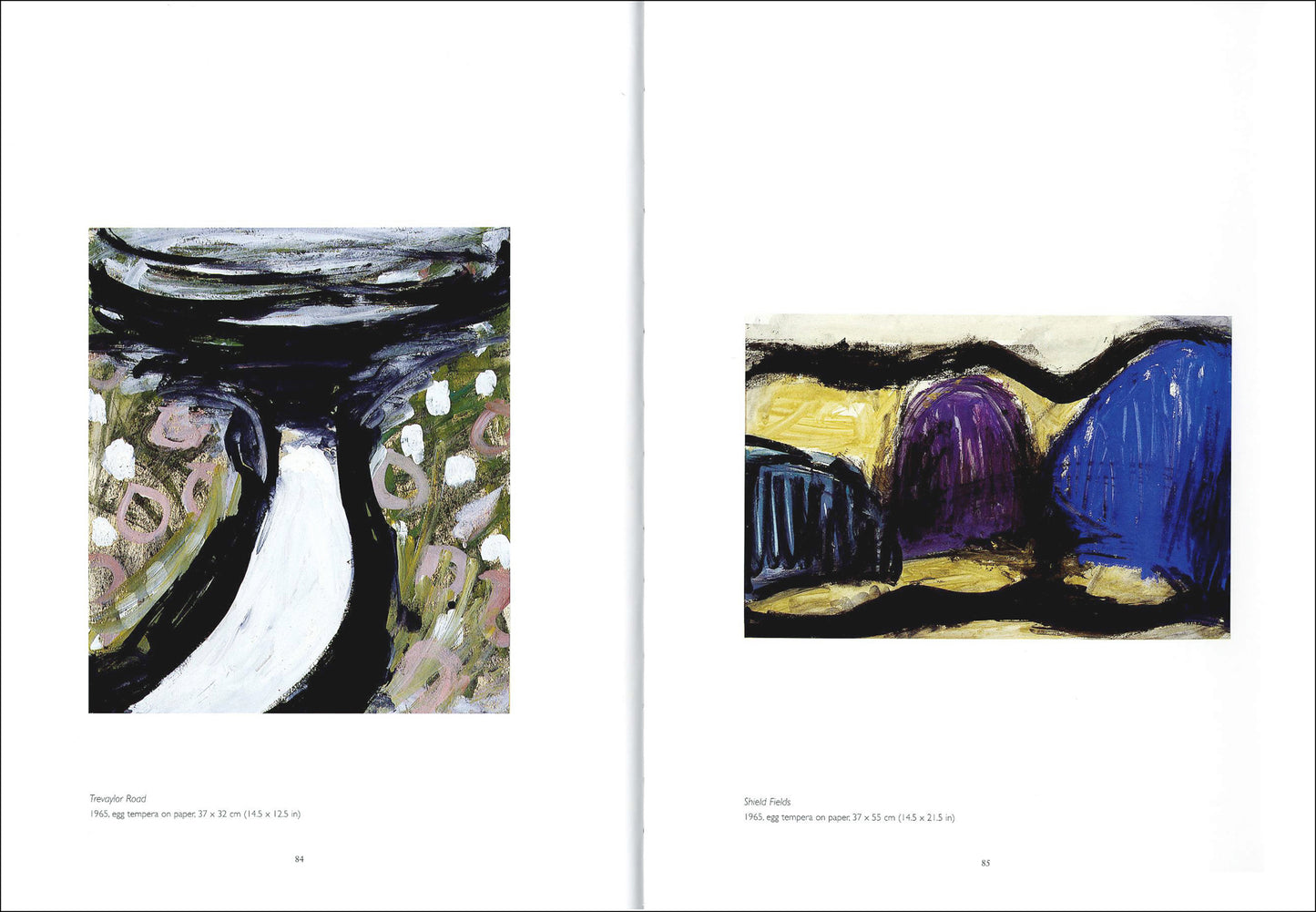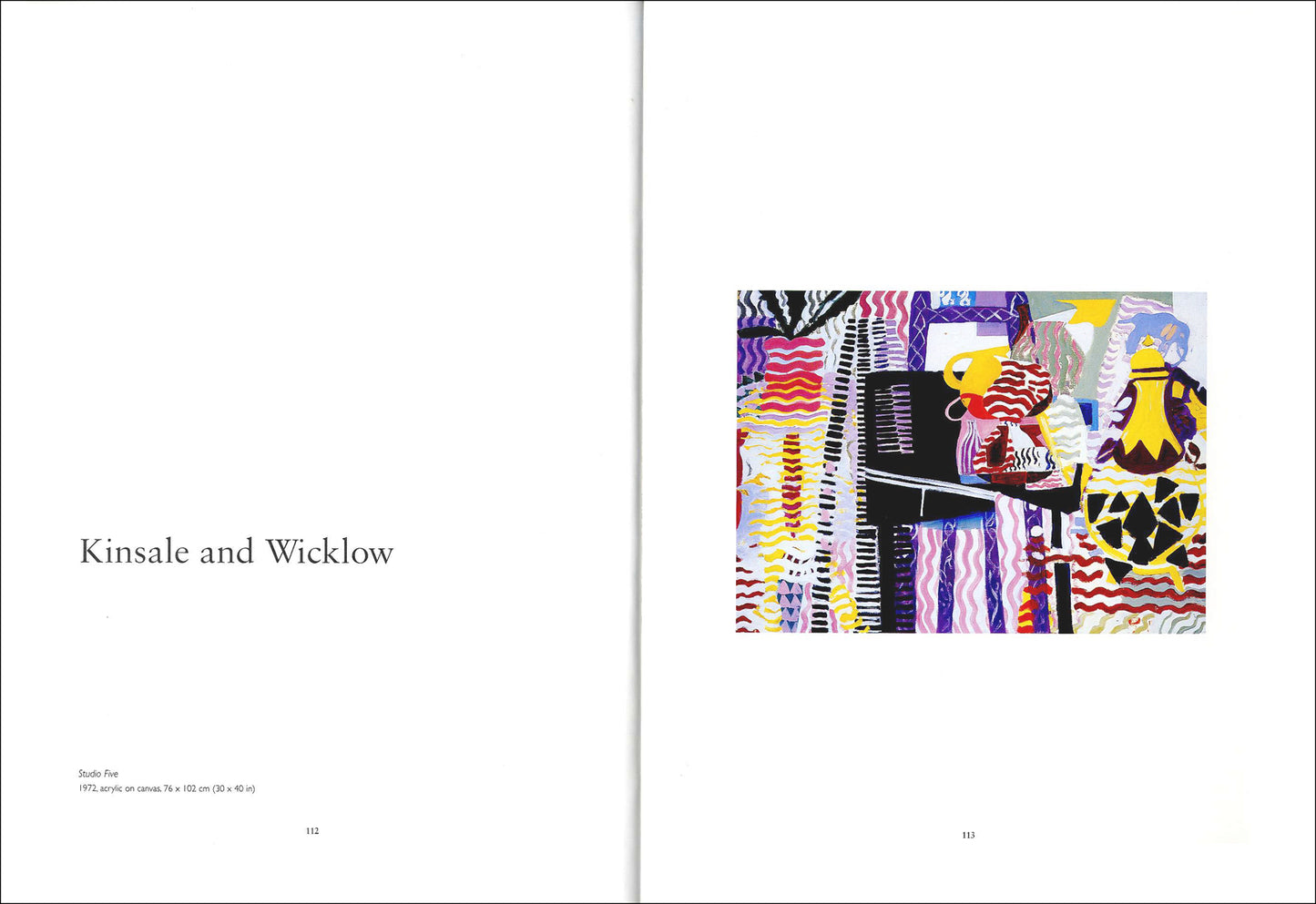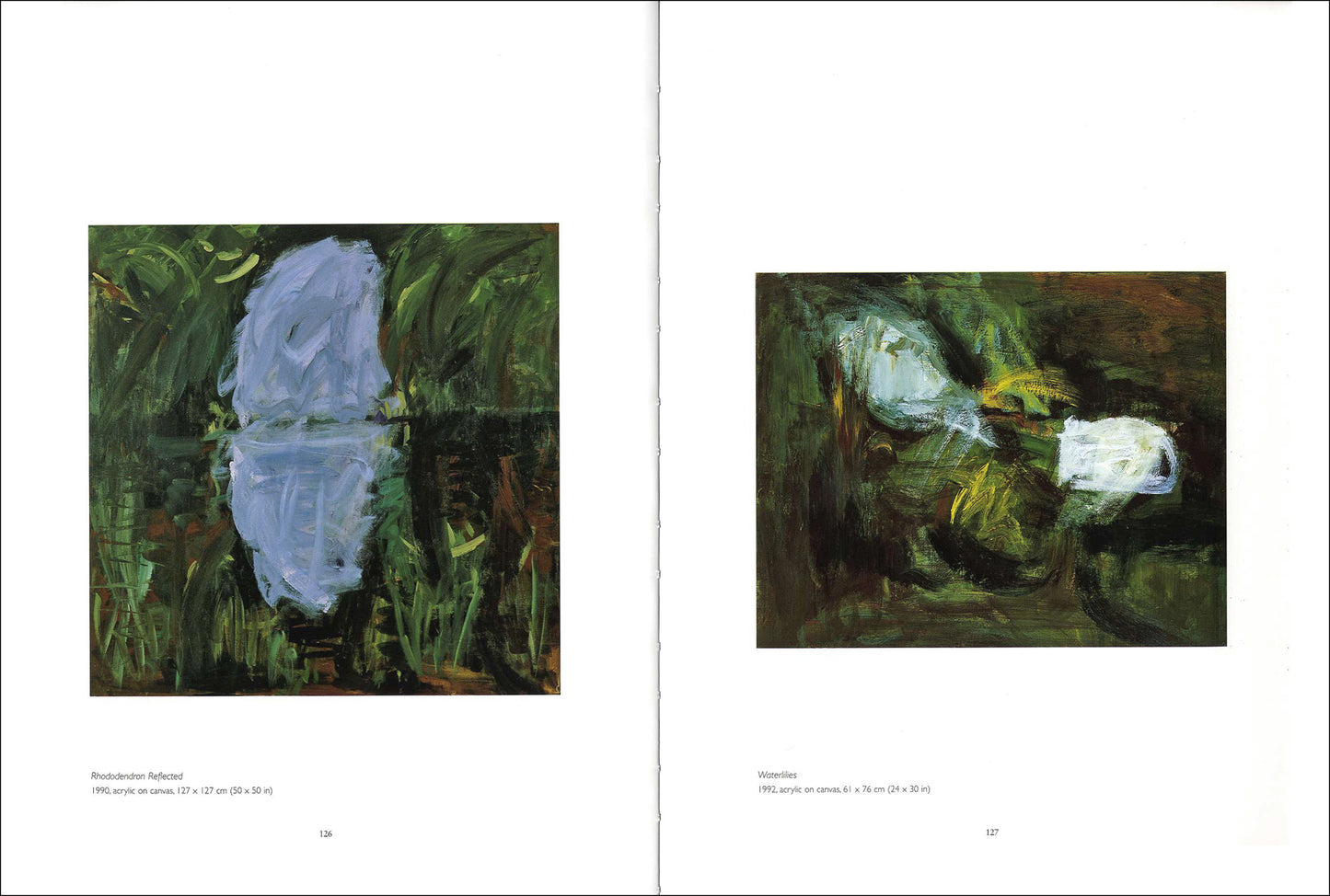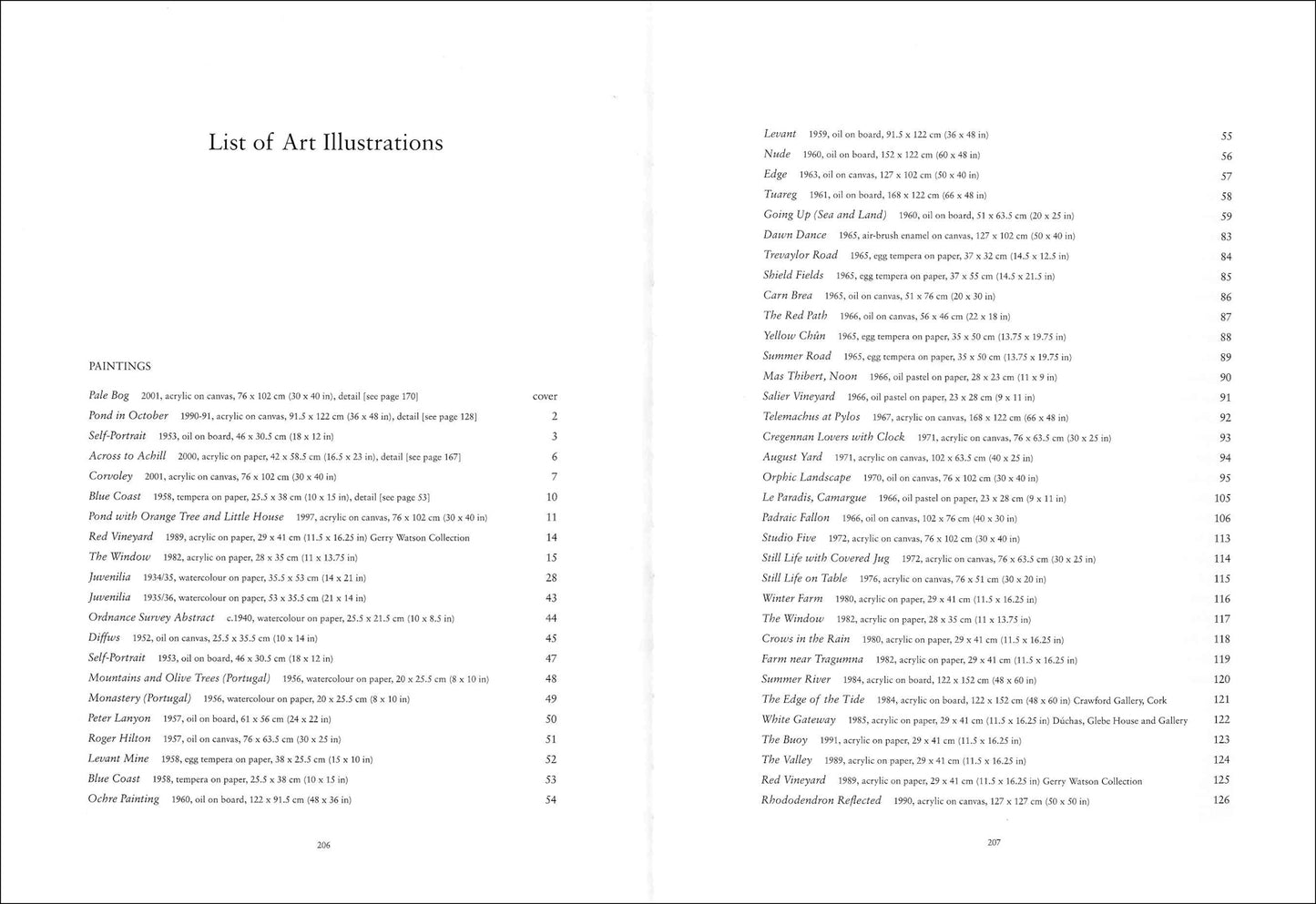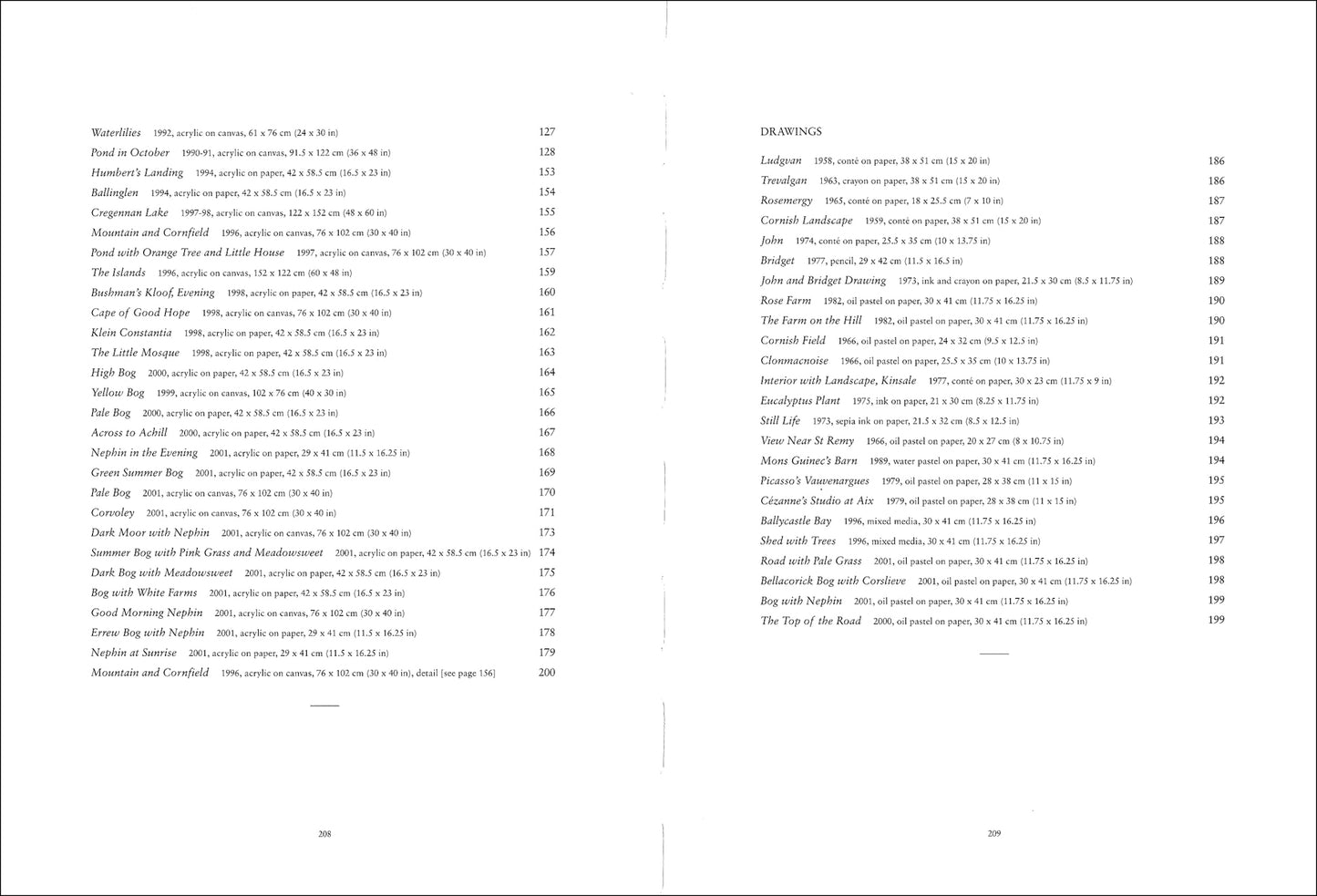Gandon
NANCY WYNNE-JONES AT EIGHTY (1922-2006)
NANCY WYNNE-JONES AT EIGHTY (1922-2006)
Couldn't load pickup availability
Share
by Brian Fallon
intro by Hilary Pyle; interview by Brian Fallon, with Barbara Ann Taylor; selected essays by Nancy Wynne-Jones
ISBN 978 0946846 375 216 pages (hardback) 32x23.5cm 189 illus index
This major book on Nancy Wynne-Jones’ life and work provides exceptional insight into the life of a fascinating artist. Her search for an artistic style of her own culminated in a strong commitment to landscape, propelled by a desire to capture and infuse that landscape into her work, so that the viewer would know what it was like to be ‘in the landscape rather than just looking at it’.
In an extraordinary and extensive interview, Nancy Wynne-Jones tells of her unusual school-less childhood, with tutoring in music and art, being surrounded by nature, and the year divided between family homes in north Wales and Dorset; of her training in Chelsea Art School, and later under the influential Peter Lanyon at St Ives in Cornwall; of her marriage to the sculptor Conor Fallon; and of the many friends, artists, locations and experiences that were eventually to give shape to her own unique artistic style and approach to her work. This artistic journey led her to discover that her search for freedom of expression was answered by all that was inspired within her, and the realisation that ‘landscape’ was her defining subject.
The interview is copiously illustrated with photographs from throughout her life, which, along with the sumptuous full-page colour reproductions, make this book the definitive record of an extraordinary artist.
EXTRACTS
"Nancy Wynne-Jones reckons that she was 52 when she was finally finished with her theoretical wanderings and realised that the freedom of expression she had always been seeking was already within her, with ‘landscape’ as her subject. It was roughly the same time as she took up composing again, creating ‘landscapes’ for orchestra. The land was in her blood, but while she loved the countrysides of Wales and Cornwall, and the quieter scenery of Cork, cultivated for centuries (where she moved not long after her marriage to sculptor Conor Fallon), it was the wildness of western Ireland that ultimately captivated her. She discovered Mayo, a country waiting to be imagined in a post-modern world, and, in the creating, Mayo discovered her true self.
Her method in this powerful painting is the same as when she started sketching in the 1950s, though she now uses oil pastels, with their bold vibrancy, in these outdoor sketches of strong van Gogh-like line. These translate into acrylic in the studio – not as replicas, but as large melodic variations with alternating intonations of place and mood. The paint is applied now in layers with glazes, creating a rich, pulsing, sensual surface, delicately controlled within the new freedom. She invites the landscape into herself by way of the sketches. The landscape she paints out later is transformed, manifestly figureless, but imbued with human emotion and presence in all its wild energy. The tension is that of an acrobat striding out confidently on a well-tried tightrope. The light captures the underlying elation; the diagonal urgency which supplants the vertical thrust of her first classical abstracts is echoed in any surface marks, which lends these larger compositions the immediacy of her oil pastel drawings."
— from the introduction by Hilary Pyle
"Ireland has some excellent painters who work in areas not dissimilar from hers [NWJ], notably Seán McSweeney, Basil Blackshaw, Camille Souter, and one or two more, but she is not really like any of them. One thing she has, however, is a sensibility which is recognisably Celtic, and I make no apology for using a term which seemingly has lost currency and even respect. If I knew a better and more precise word for this quality I would gladly employ it, but I know of none, and surely it is as legitimate a phrase as Teutonic, Latin, Nordic, etc. All this is probably not so much a question of style, in the end, as of sensibility. The type of lyrical awareness which informs her work is common to Dylan Thomas, Lanyon, perhaps David Jones, as well as to much of Jack Yeats and Patrick Collins, though there are also flashes of it in that other ultra-English painter, Ivon Hitchens. I know and recognise this quality but cannot define it, though I might say, very tentatively, that it comes close to a pantheistic earth sense while remaining unfettered and almost ethereal. It is quite free of the gentility and inhibiting good taste which infected as potentially gifted a painter as Gwen John, who, ironically, was Welsh by blood and background but never quite managed to throw off the devitalising legacy of her London art training. In spite of her long domicile in France, her tonal ‘refinement’ ultimately drained the blood from her work, leaving it chalky and pallid, whereas Nancy, who has never lived for any long period on the Continent, has a natural affinity with its art, and at times handles colour like a Frenchwoman born. She is equally at home with Italian Renaissance art as with contemporary trends, and might even say, like the musician Cecil Gray (a Scot), that she is ‘both Celt and Latin’."
— from the essay by Brian Fallon
|
CONTENTS Nancy Wynne-Jones: “Ulysses ... Possess these shores with me” Hilary Pyle 6 A Subtle Poet of the Palette Brian Fallon 10 The Artist Speaks: a 4-part interview Brian Fallon (with Barbara Ann Taylor) 19 Paintings and Drawings Artist’s Notebook 200 List of Art Illustrations 206 |
